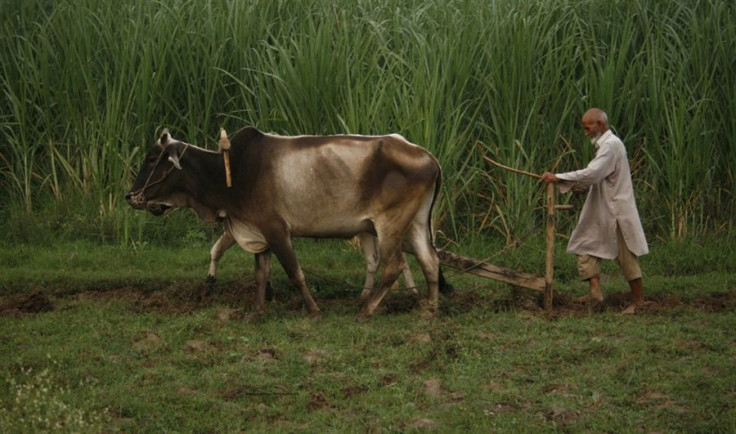Give Me Land, Lots Of Land: Only 5% Of Pakistanis Own Two-Thirds of Farmlands; One-Half Of Farmers Are Landless

To illustrate the huge gap between the rich and poor in Pakistan, consider that only 5 percent of the country’s population owns almost two-thirds (64 percent) of its farmlands.
That bit of data came from The Society For Conservation and Protection of The Environment (SCOPE), a Pakistan-based NGO. In addition, about one-half (50.8 percent) of rural households are landless -- a direct result of a feudal system that has existed for centuries.
Tanveer Arif, the chief executive officer of SCOPE, warned that this imbalance in land ownership plays a significant role in maintaining poverty and food insecurity in the impoverished country of some 180 million people.
Dawn, an English language Pakistani daily newspaper, reported that Arif called for a dramatic overhaul in farm ownership, citing the crucial place of agriculture in the national economy.
Arif indicated that 25 percent of Pakistan’s GDP, 60 percent of export earnings and 48 percent of employment are generated by its farms.
Worsening the imbalance, Arif said that wealthy investors from Persian Gulf states are also buying up Pakistani lands, leaving very little to small farmers, who are also subject to water scarcities. For example, the United Arab Emirates purchased about 325,000 hectares (800,600 acres) in Punjab and Sindh provinces in June 2008 alone, while Abu Dhabi investors bought about 16,000 hectares of farmland in Baluchistan.
Arif also called for the imposition of taxes on big landowners and the establishment of cooperative farming ventures in place of what he called “corporate” farming.
According to a report in Daily Times, more than 77 million people in Pakistan do not have enough food, due to the government’s archaic and unjust agricultural policies.
“[The] feudal system and corporate farming are posing [a] threat to food security in Pakistan, hence both needs to be stamped out,” Arif told the Times.
“Corporate agriculture farming policy is against the economic and food security interests of the nation. It will displace farm [laborers] and further marginalize them from their livelihoods. Corporate farming is not just land-grabbing, but it is water-grabbing in the form of agricultural production [being] exported.”
Previous attempts at land reform in Pakistan had largely failed, he noted.
“During [former Prime Minister] Zulfikar Ali Bhutto’s regime in 1972, only 520,000 hectares of land had been surrendered, while 285,000 hectares redistributed among 71,000 farmers. In 1977, ceilings on private ownership of farmland were further reduced to 4 hectares of irrigated land and 8 hectares of non-irrigated land. Gen Zia-ul Haq and governments in 1980s and 1990s did little to implement land reforms because they were supported by the landed aristocracy.”
Mubashir Hasan, a former finance minister and social activist, told the Integrated Regional Information Network (IRIN) news agency that land reform had not taken in Pakistan (unlike in neighboring India) because in many cases politicians themselves owned large land-holdings and did not want to transfer ownership to tenants.
“There will be no land reform [in Pakistan] until [the] people are in control of governance," he said.
Indeed, efforts at land reforms were even branded as illegal under the Islamic Sharia laws that Zia had implemented during his reign.
The tight control of precious land by tiny elite of wealthy landowners even dooms many laborers to permanent bondage. IRIN reported that almost 2 million people working on farms in Pakistan are clamped down by debt bondage -- meaning they work for nothing, a virtual form of modern-day slavery. For other landless tenants and farm-workers, an entrenched system of sharecropping forces them to hand over more than one-half of their crops to their landlords.
Powerful and wealthy farmers also take advantage of government subsidies in water and agriculture, and benefit greatly from technological improvements that have upgraded yields, the World Bank stated, giving them little incentive to hand over their properties.
"Without distributing land among tenants and landless peasants, there is no possibility of progress. The end of feudalism is a must for modernizing society. Until effective land reforms are carried out, poverty can never be eliminated," Farooq Tariq, secretary-general of the Kissan Rabita Committee, an umbrella group of 22 peasant organizations, told IRIN.
In India, which abolished the ‘zamindari’ system (where a few wealthy landowners controlled vast estates) right after independence in 1947, farm ownership is somewhat more equitable than in Pakistan, but not by much.
According to Foreign Affairs, despite decades of land reform legislation by state and federal government, more than 20 million rural families across India own no land, and millions more have no legal rights on the lands where they work and live on.
“Landlessness contributes to many of the social ills associated with poverty: malnutrition, illiteracy, conflict, child marriage, and women's disenfranchisement,” wrote Tim Hanstad, chief executive officer of Landesa, an international land rights organization.
© Copyright IBTimes 2024. All rights reserved.





















